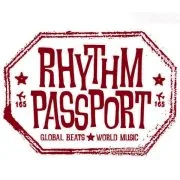Savour, swing, rhythm and joy distinguish the magic guitar of Manzanita, spanning around the golden age of Peruvian Cumbia. Trujillo, Perú 1971 – 1974 comprises the personal style developed by the self-taught guitarist Berardo Hernández (1943-2007).
Along with his Conjunto: Antonio Medina (bongos), Héctor Mattos (congas), Ricardo Valles (timbales), Enrique Ibérico (bass), and Hernán Huamán (organ), this 14-track compilation (compiled and released by Samy Ben Redjeb through his Analog Africa label) brings to life a cumbia style that relies on the costal, Andean, and tropical flavour, as well as on Colombian cumbia, Cuban guaracha, Peruvian huayno, to form a psychedelic global techno-cumbia.
Understood as a music movement that introduces the electric and electronic instruments, and as the transition to the chicha movement, Manzanita’s compilation is divided into four categories which tracks alternate styles of feelings and affairs. ‘Shambar’, ‘No me marcharé,’ and ‘Mi pueblito’ are three of his most representative singles from 1969-72. The Cuban guaracha rhythms are introduced along with a strong presence of the traditional huayno. Manzanita’s roots and a rural, popular and urban heritage can be recognised at once.
Thriving rhythms and flavours are found in another group of songs. ‘Manzaneando’ is characterised by improvisations in the bass and percussions, while the guitar mixes enthusiastic grooves of urban and popular nature. A nice contrast comes with ‘Lamento de la Puna.’ The sound of the Andean cry blends itself with the full-flavoured cumbia. With the music and text, it brings to mind the image of a pastoral life from dawn to dusk. Work is interrupted by the fever of ‘Un Sábado por la Noche’; party, leisure, joyfulness, and pleasure become rhythmically itchy.
Names of women are characteristic and a ‘must’ in cumbia music. Love, wiggle, and desire mix together as portrayals of local bands such as Los Cañeros in ‘La Buenita’, or dance rhythms in ‘Salome’, or declaration of love in ‘Catita’. ‘Mamá Ocllo’ is something peculiar since the recording of every instrument was very controlled and balanced, however the band has the function of accompanying the guitar.
Berardo’s preoccupation with establishing his own provincial identity can be identified in a fourth category, one that depicts traditions and villages. ‘La Caihuita’ symbolises a Caribbean coastal town where tropical music comes forward and the keyboard is the main carrier of flavour. On the other side, ‘La Mazamorrita’, which refers to a dish of Criollo food, where the guitar seems to speak. Lastly, ‘the norteño’ refers to weather in the northern coast. In this case, every instrument has an important role at some point in the song through improvisations or in dialogue with the guitar.
In an overall balance, this album is like an entrance door for those new to Latin music with the roots of cumbia. And for the connoisseurs, it has the advantage of a panoramic synthesis of the best of Manzanita in a Peruvian cumbia scene dominated by him and Enrique Delgado (Los Destellos).


